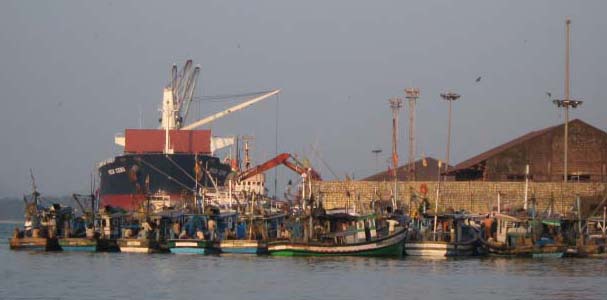Besides its own impact, port development is often accompanied by other activities such as the location of industries, power plants, railway lines, highways, hotels, SEZs, residential complexes, etc., that have multiple detrimental impacts – environmental, social and erosion related.

The report discusses how the present development model would not confer any economic advantage and will not be optimal given that most major ports in India currently not only lack efficiency and but also have the potential for significant improvements in terms of operations, expansion of capacity and modernization. Based on the observations and review, the following are recommended -
- National Port Planning Policy: This must include a study and review of social and environmental impacts (including cumulative and ancillary development impacts) of all existing port projects and their operations till date in the country with a one and half year time frame.
- Role of Public Port Authorites: As compared to major ports, non-major ports operate with lesser regulatory oversight. The government has taken initiatives to simplify regulations. There is also an immediate need for a public port authority that could be considered at the central level with a mechanism for coordination with the state governments as a means to increase focus on areas such as long-term planning, infrastructure development, asset management, and regulatory functions such as maritime safety, environment protection, social concerns and fair competition.
- The MoEF should assess and develop very clear guidelines and terms of reference for identifying ecologically sensitive and important socio-cultural areas in the coastal zone. Once this is done, a buffer ‘no development’ zone for at least a 10-25 km radius around these areas may be demarcated. Ports, harbours and industrial development in this zone must be prohibited, and all other activities, should be vetted and monitored to ensure they do not adversely affect the habitat.
- All states should carry out pre-feasibility and environmental and social studies on port site identification and planning. The Central Government (Planning Commission, MoES and MoEF) should first develop guidelines, protocols and terms of reference for such studies.
- A guideline and manual on EIAs for ports and harbours should be developed and made mandatory for adoption by all project proponents as per law. In this context, the MoEF should immediately set up a committee of experts to review the ‘EIA Guidelines for Ports and Harbours’ developed by National Institute of Ocean Technology, Chennai.
- Carrying capacity assessments as well as comprehensive cumulative and individual assessments should be the basis for planning and providing safeguards to ensure that such projects are not located in the vicinity of sensitive areas.
- No SEZ (port based or otherwise) should be located in the CRZ area.
- Comprehensive EIAs and public hearings should be mandatory for all categories of ports (including captive port projects within minor port limits), harbours and jetty projects.
- Regional EIA (comprehensive) for all proposed ports above a certain threshold, should be made mandatory.
- Post-clearance monitoring should be conducted by an independent third party institution which will report directly to the MoEF. The costs of the same should be borne by respective port developer. Post-clearance monitoring by civil society should be facilitated and supported.
- Land acquired by port developers should be used only for port related activities and expansion. A list of port-based activities requiring the waterfront should be developed.
- A framework and process to address social and livelihood concerns of communities in port based projects should be developed and adopted as part of the national port development policy. Till the above are complied with, no new port project should be cleared.
- Until fishing communities are accorded land rights and access rights to areas they have lived in and accessed, and until these are legally recognised by the State in the form of legislation, no new port project should be permitted along coastal stretches if there is opposition to the project from fishing communities.
Download the report below -
Posted by
Attachment





 Harbouring_trouble_The_social_and_environmental_upshot_of_port_growth_in_India_Dakshin_Foundation_2011.pdf
Harbouring_trouble_The_social_and_environmental_upshot_of_port_growth_in_India_Dakshin_Foundation_2011.pdf







